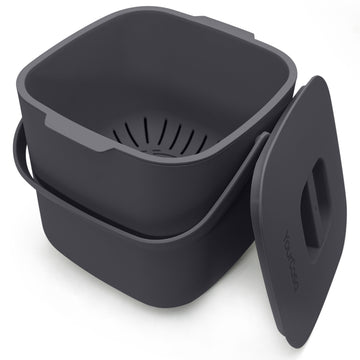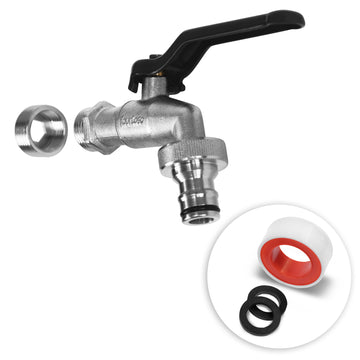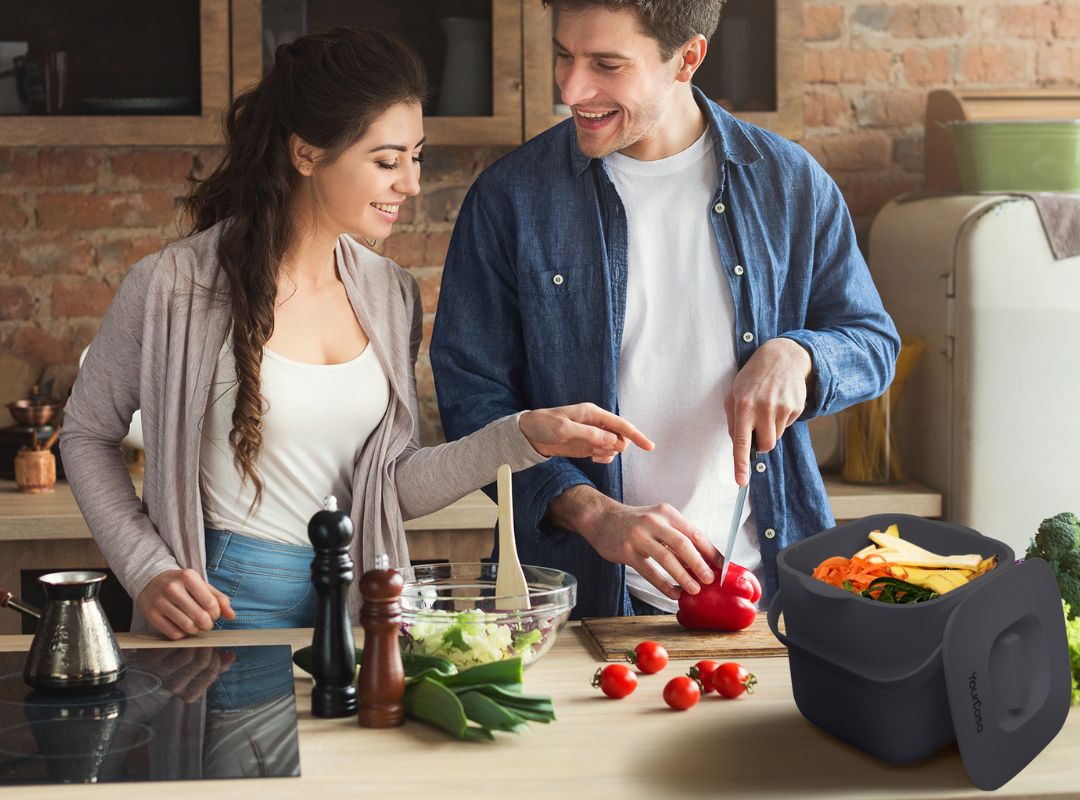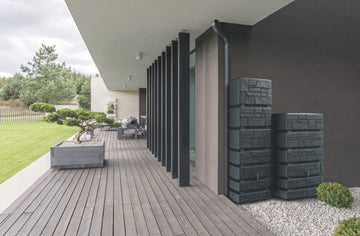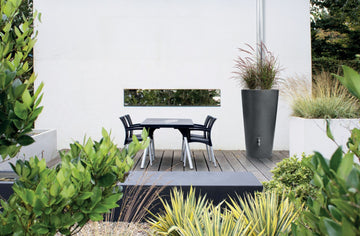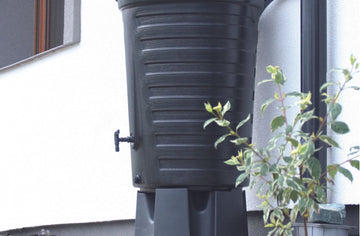
Spring is a wonderful thing. No more slush, it is light longer, the warmth is slowly returning and the sun is increasingly able to fight its way through thick layers of clouds. Not only do we humans like that, but the plants in our gardens also do. In short: new life is returning.
You shouldn't start spring without any preparation , but at least get your garden in shape a little. Rain barrels and composters are particularly important. Rain barrels collect fresh spring water, while composters need to be prepared to support the cycle of life with nutrient-rich compost.
How to prepare rain barrels and composters for spring? To prepare your rain barrels for spring, you should give them a thorough clean by removing any dirt and algae. Also check for cracks or leaks that may have been caused by frost. Also make sure the drain is clear to prevent overflow. For composters, you should remove any old material that has not rotted over the winter and fluff up the remaining compost to improve aeration. Then add fresh organic waste to activate the composting process.
Repairing rain barrels after winter
After a long winter, you absolutely have to get your rain barrel in shape again so that it can effectively collect rainwater in spring and summer. Cold and frost could have damaged it over the winter - especially if you didn't make it properly frost-proof. You can read here what you can do to repair your rain barrel after the winter.
Cleaning and checking for damage
Start by giving your rain barrel a thorough cleaning . Remove leaves, dirt and any algae buildup to ensure that the water you will collect over the spring and summer stays clean. Then, carefully check the barrel for cracks, leaks or other damage that winter may have left behind. Seals and connections should also be checked to ensure that everything is and remains tight. If there is any damage, you will of course have to repair it before you can use your barrel.
Preparing for efficient water collection
Once you've cleaned and repaired your rain barrel, it's time to prepare it for efficient water collection . First, make sure it's optimally positioned to collect as much rainwater as possible - ideally directly under a downpipe that directs water from your guttering directly into the barrel. Check the drainage and make sure overflow devices are free of blockages so excess water can be easily drained away. Also consider whether a connection system to additional barrels would be useful to increase collection capacity - especially if you noticed that your barrel was full more often in the previous year.
Here is the ideal procedure at a glance:
- Clean the rain barrel : Remove leaves, dirt and algae to always have clean rainwater.
- Check for damage : Check for cracks, leaks or other damage and inspect seals and connections for tightness.
- Repair damage : Fix any damage you find.
- Optimal positioning : Ideally, place the barrel under a downpipe to collect the highest possible amount of water.
- Check water drainage : Make sure overflow devices are free of blockages to drain excess water.
- Consider a connecting system : Consider connecting several rain barrels together to increase the capacity of your system.
Activating the composter for spring
Spring brings new life to your garden – and that also applies to your composter. When it is cold and frosty, most of the natural processes in your compost stop. As soon as it gets warmer again, the Composting process revived . The beginning of spring is the perfect time to prepare your composter so that it can supply your garden with nutrient-rich fertilizer again over the summer. We'll show you how to do it.
Evaluation and refreshment of compost material
Start spring preparation of your composter by thoroughly assessing the material you still have . Remove any rotted pieces and loosen the compost to improve air circulation. This will ensure that the composting process can start again later. Add a new layer of fresh organic waste to further boost the decomposition process. This fresh material will activate the microorganisms in the compost that are responsible for decomposition. Then just make sure to keep the compost moist at all times - because adequate moisture is crucial for effective composting.
Optimal compost composition for spring
For successful spring composting, it is important to have the right balance between green (nitrogen-rich) and brown (carbon-rich) materials . Green ingredients such as kitchen scraps and fresh greens add nitrogen, which feeds the microorganisms in the compost. Brown materials such as dry leaves, twigs and paper provide structure and help keep the compost loose and airy. An ideal ratio of around 3:1 (brown to green) promotes rapid and odor-free decomposition. If you also turn your compost regularly, you will ensure an optimal composting process.
- Evaluate compost material : Check the compost for rotted pieces, remove them and fluff the rest to improve air circulation.
- Refresh compost : Add a layer of fresh organic waste to boost the composting process and activate the microorganisms.
- Control moisture : Always keep the compost moist.
- Balance green and brown materials : Maintain a balance of about 3:1 between brown (carbon-rich) and green (nitrogen-rich) materials to promote optimal decomposition.
- Turn the compost : Turn the compost regularly to ensure even composting and aeration.
Optimizing the use of rainwater and compost
Using rainwater and compost can transform your garden into a sustainable natural paradise . By combining these natural resources, you not only promote the growth of your plants, but also contribute to protecting the environment. Rainwater is an excellent alternative to tap water because it not only contains less lime and is therefore better for your plants, but it is also easier on your wallet. Compost provides your plants with many rich nutrients and improves the soil structure in your garden.
Recommended products for the start of spring
Of course, you should be optimally prepared for the perfect start to spring. At YourCasa you will find everything you need for your garden - namely rain barrels, composters and accessories.
Rain barrels from the online shop
With the large selection of rain barrels from YourCasa, it can be difficult to make the right choice . That's exactly why we're presenting you with a few models that might be just right for you.
If you live in a rainy region, the YourCasa AquaGiant XXL could be just the right barrel for you. It is one of the largest rain barrels we have on offer. With it, setting up several barrels almost automatically becomes obsolete.
If you're style conscious, you'll be spoilt for choice at YourCasa - because all the rain barrels look pretty good. But one of our favorites is definitely the YourCasa EcoDrop .
If you want to design your garden in a completely natural look , you should take a look at the YourCasa Forest . It is hardly noticeable in a natural garden and contributes to a cozy atmosphere.
Composter for spring
You can also find garden composters at YourCasa. These containers allow you to compost on a larger scale in your garden .
To fill your composter for the first time , start with a layer of coarse material such as shredded twigs or coarse mulch at the bottom. This will encourage aeration. Then add alternating layers of "green" (such as vegetable scraps, coffee grounds, fruit peels) and "brown" materials (such as shredded eggshells, paper towels, chopped cardboard pieces). Be sure to use more brown layers than green to avoid odors and pest infestation. Keep the composter slightly moist and mix the layers occasionally to aid the composting process.

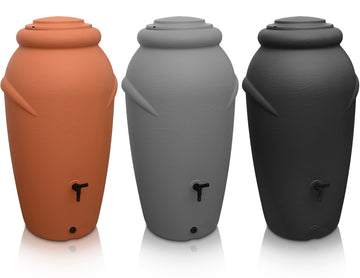
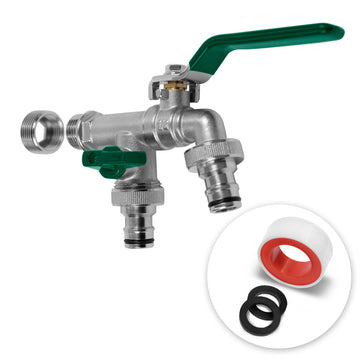
![Drei hohe YourCasa Regentonne 240 Liter [Wellen-Design] - Frostsicher & UV-beständige Gartentöpfe in den Farben Schwarz, Grau und Terrakotta, jeweils mit Drainagesystem für nachhaltige Bewässerung.](http://yourcasa.de/cdn/shop/files/ohnelogo_b8aeecac-557e-4106-a999-e77dcd160209.jpg?v=1707130230&width=360)
